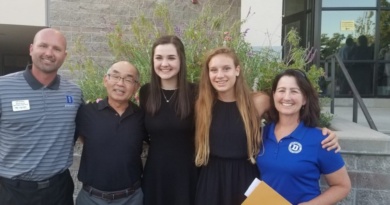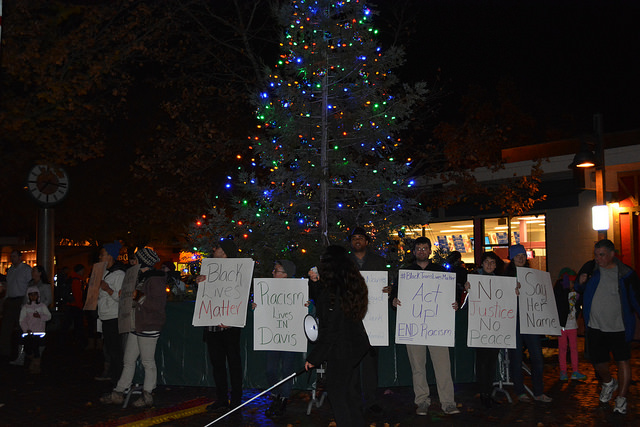Davis High reacts to Hurricane Harvey
By Christine Kim,
BlueDevilHUB.com Staff–
Hurricane Harvey, first sighted as a tropical storm, hit the Gulf Coast on Aug. 25 and gradually made its way through parts of Texas, Louisiana and southern Arkansas, leaving more than 7,000 homes destroyed and over 80 people dead.
On Aug. 24, Harvey was classified as a Category 1 hurricane once its winds reached 80 mph. The following day, Harvey reached Category 4 status with its wind speed increasing to 130 mph. Despite its catastrophic winds, the major danger was the flooding caused by the immense amount of rain.
Harvey is a similar storm to other major tropical storms such as Hurricane Katrina, however it differs in its extreme amount of rainfall. According to the National Weather Service, “[Hurricane Harvey] is unprecedented and all impacts are unknown and beyond anything experienced.”
To try to mitigate the effects of flooding, the state of Texas installed Addicks Dam and Barker Reservoir to prevent the river “Buffalo Bayou” from flowing downstream into Houston.
However, according to NPR, the hurricane ended up producing trillions of gallons of rainwater in just four days, flowing over the Addicks Dam and Barker Reservoir spillway of 108 feet on Aug. 29, equating to “tens of billions of dollars” in damages, according to the New York Times.
At Davis High, almost 2,000 miles away, senior Brynn Casey’s cousin Elizabeth Nederhoff was evacuated from Pearland before Harvey hit. Nederhoff felt reluctant leaving her home.
“I don’t feel that I was very prepared, especially if I would have stayed home. There are a lot of things I would have done differently and many supplies I had not thought of that could have been needed,” Nederhoff said.
Moreover, Hurricane Harvey was significant to DHS history teacher Peter Reilly because of his relatives living in Houston.
“They got out safely but their houses were pretty badly damaged and they lost a lot of belongings,” Reilly said.
Reilly believes the tragedy is a good opportunity for DHS students to help other people.
“We live in a sheltered community and aren’t really exposed to things like that,” Williams said. “So hopefully it inspires students to help because no contribution is too small for people in need.”




